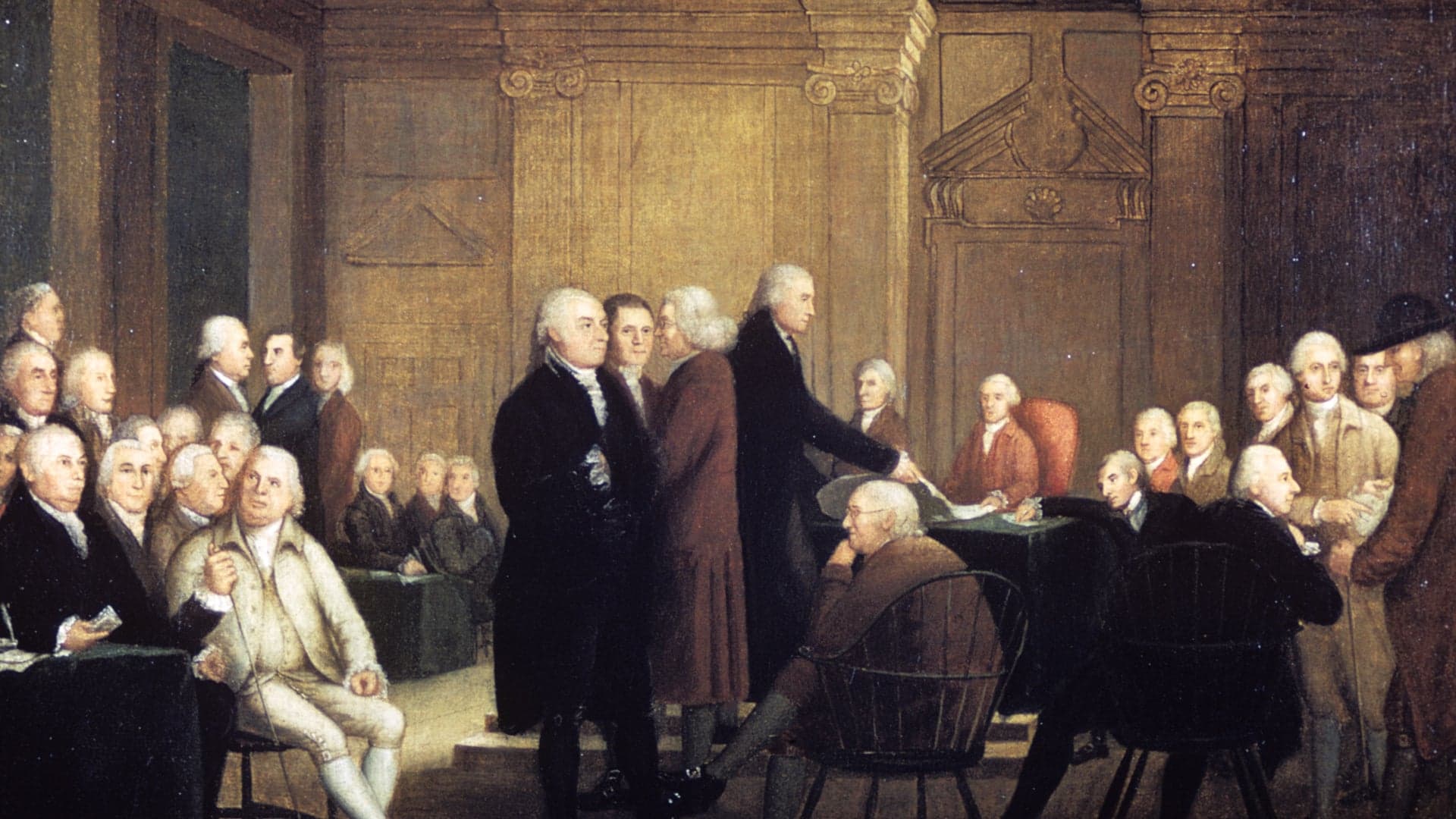On January 14, 1784, the Continental Congress ratifies the Treaty of Paris, ending the War for Independence.
In the document, which was known as the Second Treaty of Paris because the Treaty of Paris was also the name of the agreement that had ended the Seven Years’ War in 1763, Britain officially agreed to recognize the independence of its 13 former colonies as the new United States of America.
In addition, the treaty settled the boundaries between the United States and what remained of British North America. U.S. fishermen won the right to fish in the Grand Banks, off the Newfoundland coast, and in the Gulf of Saint Lawrence. Both sides agreed to ensure payment to creditors in the other nation of debts incurred during the war and to release all prisoners of war. The United States promised to return land confiscated during the war to its British owners, to stop any further confiscation of British property and to honor the property left by the British army on U.S. shores, including Negroes or slaves. Both countries assumed perpetual rights to access the Mississippi River.
Despite the agreement, many of these issues remained points of contention between the two nations in the post-war years. The British did not abandon their western forts as promised and attempts by British merchants to collect outstanding debts from Americans were unsuccessful as American merchants were unable to collect from their customers, many of whom were struggling farmers.
In Massachusetts, where by 1786 the courts were clogged with foreclosure proceedings, farmers rose in a violent protest known as Shay’s Rebellion, which tested the ability of the new United States to maintain law and order within its borders and instigated serious reconsideration of the Articles of Confederation.
